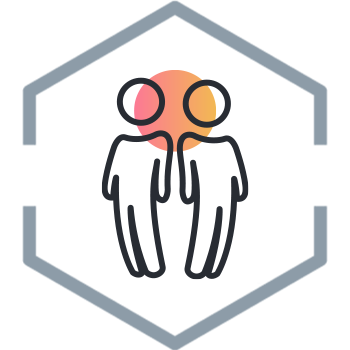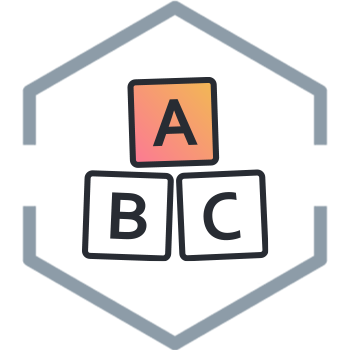Is Your Child On The Spectrum?
Understanding The Spectrum
It is a common misconception that all children with autism will have the same symptoms, after all, it is the same condition, right? Autism is a developmental disorder that is expressed along a continuum — the spectrum. That’s where the term Autism Spectrum Disorder (ASD) originates from. Your child may land somewhere on the spectrum, but be as unique as every other child. The three things that all people on the spectrum have are decreased or absent communication skills, repetitive behaviors, and difficulty with interpersonal or social skills. However, some of these symptoms may be subtle while others are severe.
If you’ve ever wondered if your child may be on the spectrum or told that you should have your child tested, learn more about the spectrum and where your child may fall on it here.

Social Interaction and Communication
- Appears to not hear well or react to sounds
- Resists touch and eye contact
- Prefers to play alone
- Delayed speech or lack of speech, including nonverbal
- Speaks with abnormal tone or rhythm — may appear sing-song like or robotic
- Takes words and expressions literally
- Has difficulty holding a conversation
- Doesn’t express emotion and has difficulty interpreting others’ emotions
- Inappropriate social interactions — passive, aggressive, or disruptive
Behaviors
- Repetitive movements — rocking or hand flicking are common
- Self-injury inducing activities or movements — scratching, slapping, or head-banging
- Develops routines and gets very upset if they are disrupted
- Appears clumsy or uncoordinated
- Odd movements — walks on toes, has exaggerated or stiff movements
- Is fascinated with details
- Sensory sensitive — light, sound, touch
- Indifferent to pain or temperature
- Seeming lack of imagination or creativity
- Fixates on object or activity with abnormal intensity

Asperger’s Syndrome
Asperger’s Syndrome is the mildest form of autism where most people are high-functioning with verbal skills and intelligence equal or superior to that of their peers, but a lack in social and communication skills are notable. Children with Asperger’s Syndrome tend to be very literal and have a difficult time interpreting facial expressions or body language. The most distinctive characteristic of Asperger’s Syndrome is a tendency to fixate on an object or activity to the point that they don’t notice other things going on around them.
Pervasive Developmental Disorder - Not Otherwise Specified (PDD-NOS)
PDD-NOS is a diagnosis for children who fall on the autism spectrum, but don’t necessarily meet the criteria for any of the other four category diagnoses. It is commonly referred to as “subthreshold autism,” because someone may have some symptoms of autism, but not all of them, or some may be so mild they are almost unnoticed. Children with PDD-NOS may exhibit some symptoms, especially in one area, but no symptoms in others. For instance, a child may struggle with moderate social deficits and limited communication skills, but experience no repetitive behaviors and have average intelligence levels.
Autistic Disorder
Classic autism, Autistic Disorder, is diagnosed in children who exhibit more severe symptoms in all three categories — social skills, communication, and repetitive behaviors. Most children in this category on the spectrum exhibit all of the classic signs of autism, but symptoms may range from mild to severe. Many children with Autistic Disorder have impaired social skills that cause negative reactions to being touched or making eye contact, exhibit severe repetitive behaviors, make obsessive gestures, and are unresponsive and/or indifferent to people. These children may be prone to hurting others, causing self-injury, and wandering, so safety is a concern.
Childhood Disintegrative Disorder (CDD)
Childhood Disintegrative Disorder, also known as Heller's syndrome, is one of the most severe and low-functioning categories of ASD and is marked by pronounced delayed motor, language, and social development coupled with impaired vocabulary. Many children with CDD experience low IQ levels, inability to control bowel and bladder function, and often suffer from seizures. The hallmark of CDD is a period of normal development — typically about three years — and then a sudden, severe regression.
Rett’s Syndrome
Rett’s Syndrome is a severe form of autism that causes a deterioration of developed skills or a lack of social and communication skills and severe physical symptoms. Children with Rett’s Syndrome are usually unresponsive to others, avoid all social contact, and are nonverbal — even when language and communication skills had once been present. Rett’s Syndrome causes impairment to strength, muscle coordination, and the ability to control their hands and feet. Many children experience relentless wringing or flinging of their hands and the child may appear catatonic or “floppy.”
7 Red Flags
of Sensory Processing Disorder






